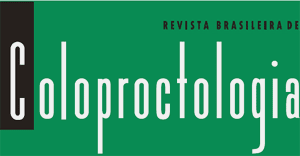Since 1960 it there was a great technological breakthrough, including the observation of the digestive system with the advent of flexible endoscopy. Initially used to the upper digestive tract and subsequently to the colon, allowing more accurate diagnoses and, in some cases, the complete treatment. Even in urgency situations, colonoscopy can be used as first choice and work as a diagnostic tool or eve the therapeutic procedure. AIM: This study analyzed the results of colonoscopy held in the Digestive Endoscopy unit at the Hospital Regional Rosa Pedrossian in Mato Grosso do Sul. MATERIALS AND METHODS: It was performed a colonoscopy in 290 patients at the unit of Digestive Endoscopy in the Hospital Regional of Mato Grosso do Sul, in during november 2006 until august 2007. The results were analyzed and verified the following variables: sex, age, solicitation as elective or emergency and diagnosis. RESULTS: The age of the patients ranged from 15 to 92 years old and the mean age was 52 years. Most of the patients were female (56.5%). The colonoscopy tests showed that 48.5% (n=141) were normal. Among the abnormal there were a prevalence of colon diverticulum (n = 56), followed by polyps (n = 37), inflammatory diseases (n = 31), cancer (n = 18) and angiodisplasy (n = 7). Polyps most usual place were in colorectal sigmoid (n = 18) followed by colorectal downward and rectum. The inflammatory diseases were shown as actinic colitis (n = 11) followed by actinic proctitte (n = 7) and nonspecific proctite (n = 7). There was a higher prevalence of procedures from the ambulatory 73%, interns 20% and from the emergency room 7%. CONCLUSION: The predominant diagnosis was diverticulum disease, followed by polyps. Digestive hemorrhage was the main signal noticed by the doctors who asked for the exam. With a high incidence of polyps, and mostly in sigmoid, just evidenced the how important the retosigmoidoscopy is. It is a relatively safe and cheaper procedure in comparison to the colonoscopy and can be performed during the simple consultation. The low incidence of angiodisplasia could be explained by a relatively low average age, differing from literature.
Colonoscopy; diagnosis endoscopy; colonic diseases; polyposis; angiodysplasia






